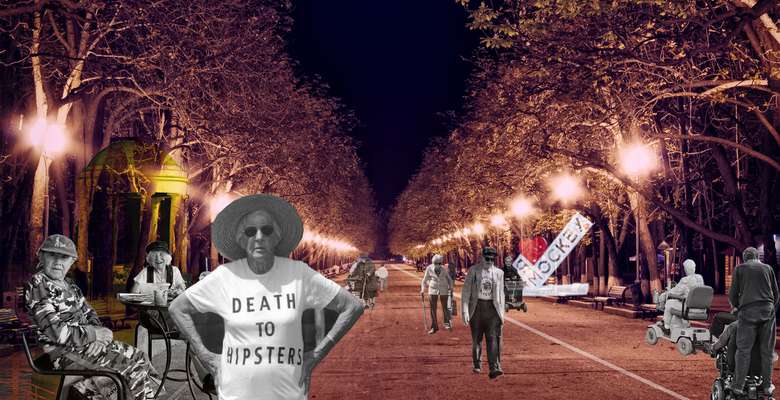Idea by
Iana Kozak
Call for ideas 2016
Old city
Old city

The critical mass of elderly is almost reached in the cities. The number of elderly which will increase up to thirty percent in 2050 needs another build environment, services and goods: devices, fashion, food, attitude to sex etc. Age is losing its importance: people live longer. Does it mean that there will be no pensioners in near future or rather there will be older adults?
On human scale daily routine differs tremendously in 30 and 70 years. Today being active and mobile citizen could bear far distance from apartment to metro station, parks, absence of elevators, noise. But when we are 75 the world shrinks: people move and react slower, – and time passes faster.
Aging is not equal period. It is consist of different stages: independent, interdependent, dependent patronized life. Each stage is characterized by particular needs. The city should be prepared for its ageing by integration of retirement dwelling within urban structure as well as social integration.
Old city
Old city

The critical mass of elderly is almost reached in the cities. The number of elderly which will increase up to thirty percent in 2050 needs another build environment, services and goods: devices, fashion, food, attitude to sex etc. Age is losing its importance: people live longer. Does it mean that there will be no pensioners in near future or rather there will be older adults?
On human scale daily routine differs tremendously in 30 and 70 years. Today being active and mobile citizen could bear far distance from apartment to metro station, parks, absence of elevators, noise. But when we are 75 the world shrinks: people move and react slower, – and time passes faster.
Aging is not equal period. It is consist of different stages: independent, interdependent, dependent patronized life. Each stage is characterized by particular needs. The city should be prepared for its ageing by integration of retirement dwelling within urban structure as well as social integration.